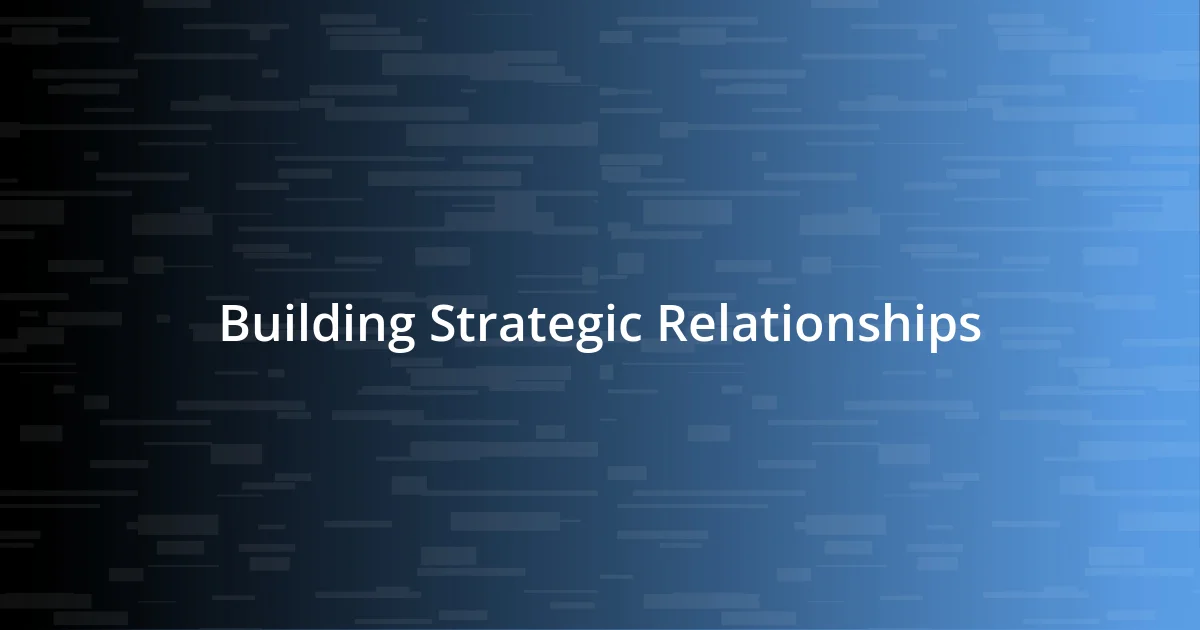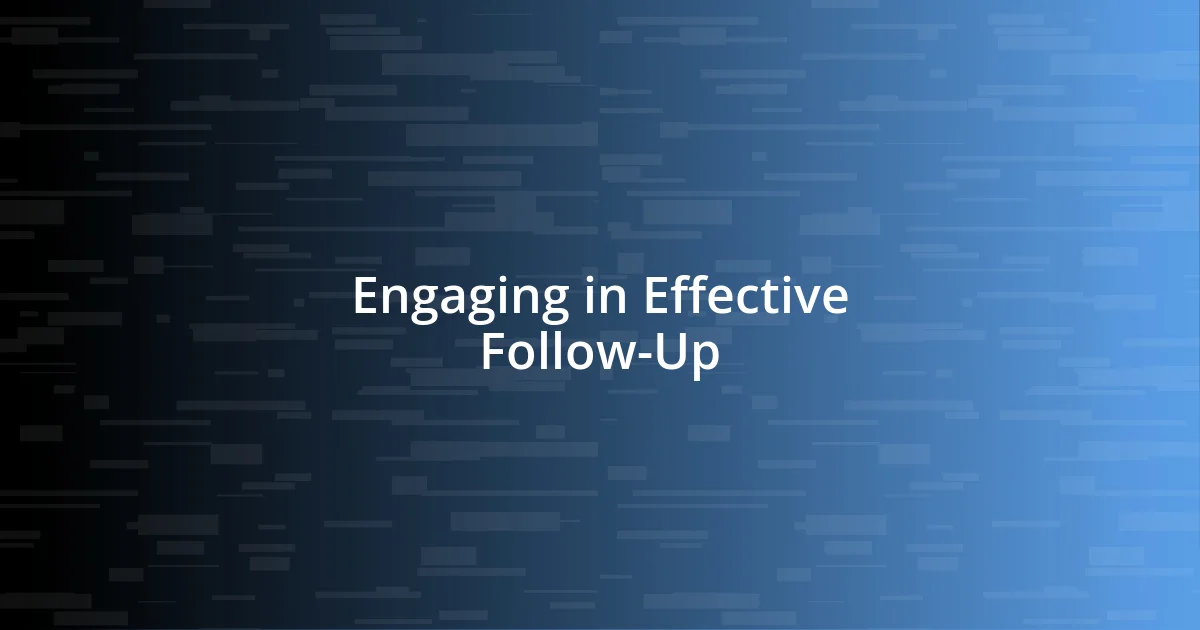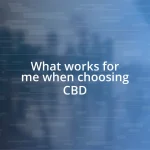Key takeaways:
- Understanding the basics of lobbying involves recognizing its accessibility to individuals and grassroots organizations, emphasizing the power of mobilizing community support and building relationships with decision-makers.
- Crafting a compelling message hinges on clarity, emotional resonance through personal stories, and a sense of urgency to engage stakeholders effectively.
- Measuring success in lobbying requires setting clear objectives and gathering feedback from stakeholders to evaluate impact and refine strategies.

Understanding Lobbying Basics
Lobbying can often seem like a daunting world filled with jargon and complex regulations. I remember my first experience—it felt a bit like stepping into a foreign country where everyone was speaking a different language. Understanding the basics is crucial; at its core, lobbying is about advocating for specific interests and influencing decision-makers, whether they be lawmakers or regulatory bodies.
Have you ever considered how ordinary citizens can affect policy? I certainly did when I realized that lobbying isn’t solely the domain of large corporations or well-funded groups. Individuals and grassroots organizations can wield significant influence by mobilizing community support and presenting compelling arguments. It’s empowering to know that passion and well-researched information can resonate even in the halls of power.
A key aspect of effective lobbying is building relationships. This means not just knowing who to talk to, but also understanding their priorities and concerns. I recall a meeting where I simply listened to a legislator express their hopes for their community—it was a game changer. By connecting on a personal level and showing that you genuinely care about their interests, you can transform a dry political conversation into a meaningful dialogue. Isn’t it fascinating how a little empathy can go such a long way in the lobbying arena?

Identifying Key Stakeholders
Identifying key stakeholders is an essential step in any lobbying effort. When I first embarked on a lobbying campaign, I discovered that it’s not just about the obvious decision-makers, but also about understanding the community and the various players involved. I recall diving deep into social networks and community groups, realizing that advocacy isn’t just top-down; often, impactful voices come from unexpected places.
To effectively identify these key stakeholders, consider the following:
- Decision-Makers: Legislators, regulatory agencies, and executives who will ultimately make the policy decisions.
- Influencers: Community leaders, activists, and organizations that can sway public opinion and garner support.
- Beneficiaries: Individuals or groups who will directly benefit from the policies you’re advocating for.
- Opposition: Key opponents who may resist your efforts—their perspectives can also shape your approach.
- Allies: Other lobbying groups or coalitions that share similar goals and values.
I learned that mapping out this landscape significantly sharpened my strategy. Every stakeholder has unique motivations and concerns, and discovering those intricacies allowed me to tailor my messages for maximum impact. It’s like piecing together a puzzle; once you know where everyone fits, your advocacy efforts can achieve a coherence that resonates across the board.

Crafting a Compelling Message
Crafting a compelling message is pivotal in lobbying efforts. One of my early experiences taught me that clarity is paramount. I once struggled to convey my main point succinctly during a meeting, only to realize that less is often more. A clear, concise message captures attention and ensures that decision-makers remember your key argument long after the conversation ends.
Another vital component is emotional resonance. I remember crafting a message around a personal story about a family impacted by proposed policy changes. The legislators’ faces softened, and the atmosphere shifted from a sterile discussion to one filled with empathy. Connecting on an emotional level can turn a routine lobbying effort into a memorable interaction that sparks real change.
Lastly, I always emphasize the importance of urgency. When I framed my message by outlining the immediate impact of a delay in decision-making, I noticed an uptick in engagement. Stating why action is required now, rather than later, helps illuminate the stakes involved, convincing stakeholders that their prompt support is essential.
| Element | Description |
|---|---|
| Clarity | Present your message in a straightforward manner, emphasizing key points for better retention. |
| Emotional Resonance | Use personal stories to create an emotional connection with your audience, making your message relatable. |
| Urgency | Communicate why immediate action is necessary, highlighting the consequences of inaction. |

Building Strategic Relationships
Building strategic relationships is a cornerstone of effective lobbying. In my own journey, I discovered that nurturing genuine connections often opens doors that formal conversations can’t. I recall a time I reached out to a local community leader who initially seemed detached from my cause. By investing time in understanding their perspective and goals, I not only gained an ally but also expanded my network through their established relationships.
Working together has a way of breaking down barriers and assumptions. For instance, one collaborative event we organized brought together stakeholders from various sectors—a mix of business leaders and community advocates. I was surprised by how shared experiences fostered mutual respect and understanding, leading to fruitful discussions. This interplay taught me that strategic relationships often ripple outward, creating opportunities I never anticipated.
Have you ever thought about the power of small conversations? I remember meeting someone at a local coffee shop who turned out to be a decision-maker’s aide. A casual chat about community issues led to introductions that significantly strengthened my lobbying efforts. This experience underscored the idea that every interaction is a potential stepping stone to deeper alliances. Building relationships is an ongoing process, and sometimes, it’s the informal connections that yield the most significant results.

Utilizing Data and Research
Utilizing data and research has been a game-changer in my lobbying efforts. I remember diving into the statistics on economic impacts related to proposed legislation. Presenting solid numbers not only bolstered my credibility but also encouraged lawmakers to grasp the urgency of my message. It’s like having a treasure map; the clearer the data, the easier it is for others to navigate towards understanding the stakes involved.
There was a pivotal moment during a briefing when I pulled up some recent studies that illustrated how public opinion shifted on the issue we were addressing. Watching the legislators react as they absorbed that information was profound; their expressions changed from indifference to curiosity. Do you see how providing research can catalyze interest? It’s rewarding to see data spark a dialogue, paving the way for deeper discussions on policy implications.
Moreover, I often discovered that visualizing data made my arguments even more compelling. While attending a meeting, I shared a graph that highlighted the direct correlation between community health and legislative support for certain health initiatives. The room grew silent as the visuals spoke volumes, bridging the gap between abstract concepts and real-world effects. If you’ve ever used graphs or infographics in a presentation, you understand how they can transform complex information into striking insights that resonate with stakeholders.

Engaging in Effective Follow-Up
Effective follow-up is crucial in maintaining momentum after an initial engagement. I learned this the hard way during a campaign when I failed to reconnect with a critical contact shortly after our meeting. It wasn’t until weeks later that I realized how much progress I could have made by simply dropping a quick note or checking in. A timely follow-up can remind a busy decision-maker of the stakes involved and keep your cause fresh in their mind.
I remember a particularly busy week when I pulled together a brief, friendly email to a state legislator who had shown interest in our project. In it, I highlighted our shared goals and provided a few enticing updates. It was gratifying to receive a response within hours, expressing their enthusiasm and asking for a follow-up meeting. Isn’t it interesting how a little nudge can rekindle interest and open doors? Keeping the dialogue going is like planting seeds; you never know which ones will blossom into meaningful collaborations.
While crafting my follow-ups, I’ve found that personalizing the message makes all the difference. Sharing a relevant article I read or mentioning a recent event they attended can forge connections that feel more sincere. Last month, I sent a note to an ally after they spoke at a conference, and included a quote that resonated with me from their speech. The response was enthusiastic, reinforcing my belief that effective follow-ups are about building relationships, not just maintaining contacts. What strategies have you employed that turned a simple follow-up into a stepping stone for greater engagement?

Measuring Success in Lobbying Efforts
Measuring success in lobbying efforts can often feel elusive, yet I’ve found that defining clear objectives helps bring clarity. Early in my journey, I set specific benchmarks, like securing meetings with key legislators or influencing certain policy discussions. Once I started tracking these metrics, I realized how satisfying it was to check them off my list. It transformed the entire experience into a more purposeful endeavor.
One significant milestone came when I managed to get a piece of legislation on the agenda for a committee meeting. I remember the adrenaline as I counted the days leading up to it. Reflecting on that moment, I realized success isn’t just about outcomes but also the process—building relationships and demonstrating our commitment to the cause. Have you ever felt that rush of excitement when your efforts result in tangible change? It reinforces the idea that each small victory contributes to the bigger picture.
Moreover, gathering feedback from stakeholders has been indispensable for evaluating my lobbying impact. After one campaign, I organized a debrief with partners to discuss what worked and what didn’t. Their insights were invaluable; hearing diverse perspectives painted a fuller picture of our effectiveness. How often do we stop to ask for feedback? By being open to this conversation, we can adapt and evolve our strategies, ensuring our efforts better align with our advocacy goals.














